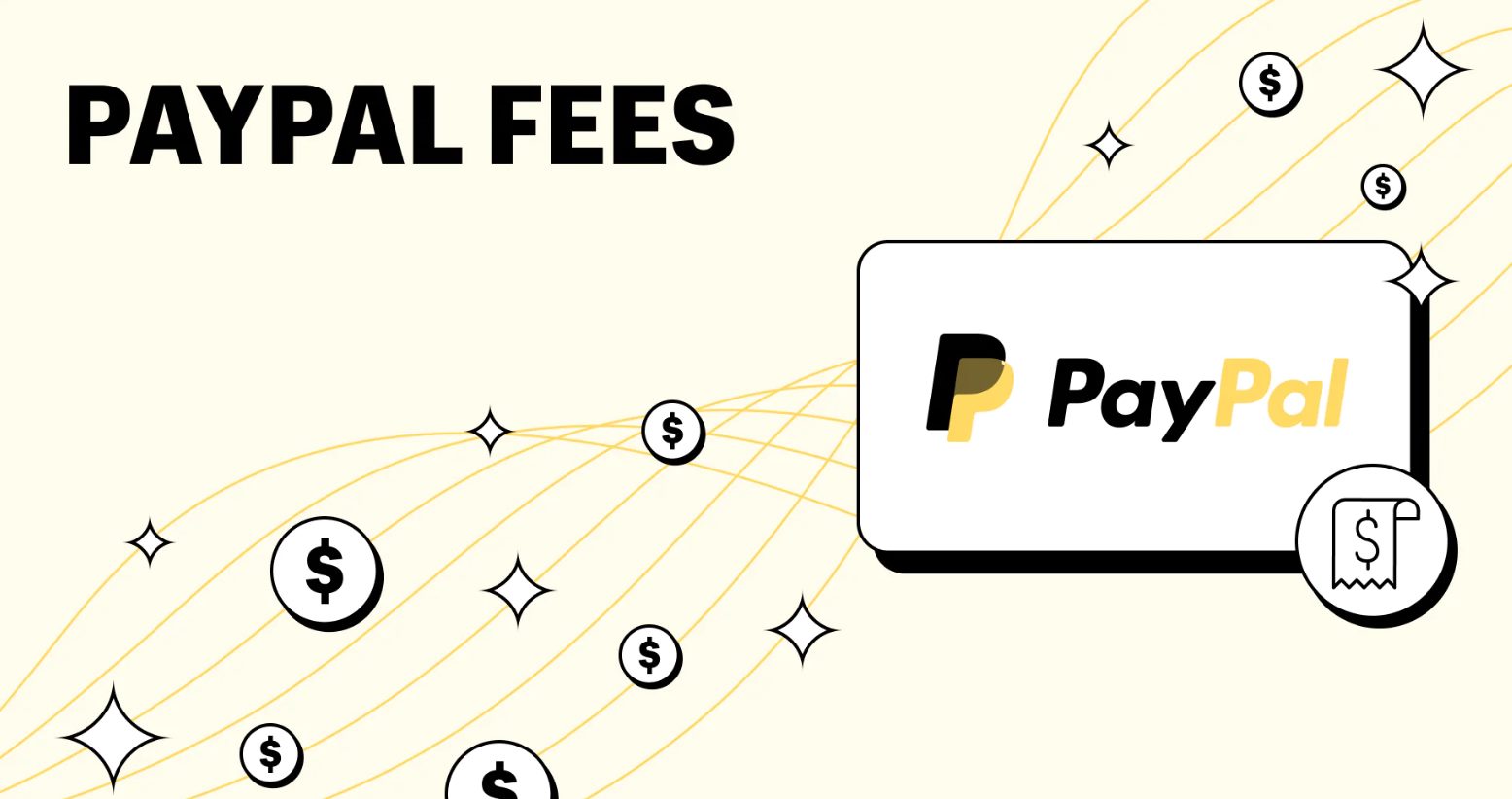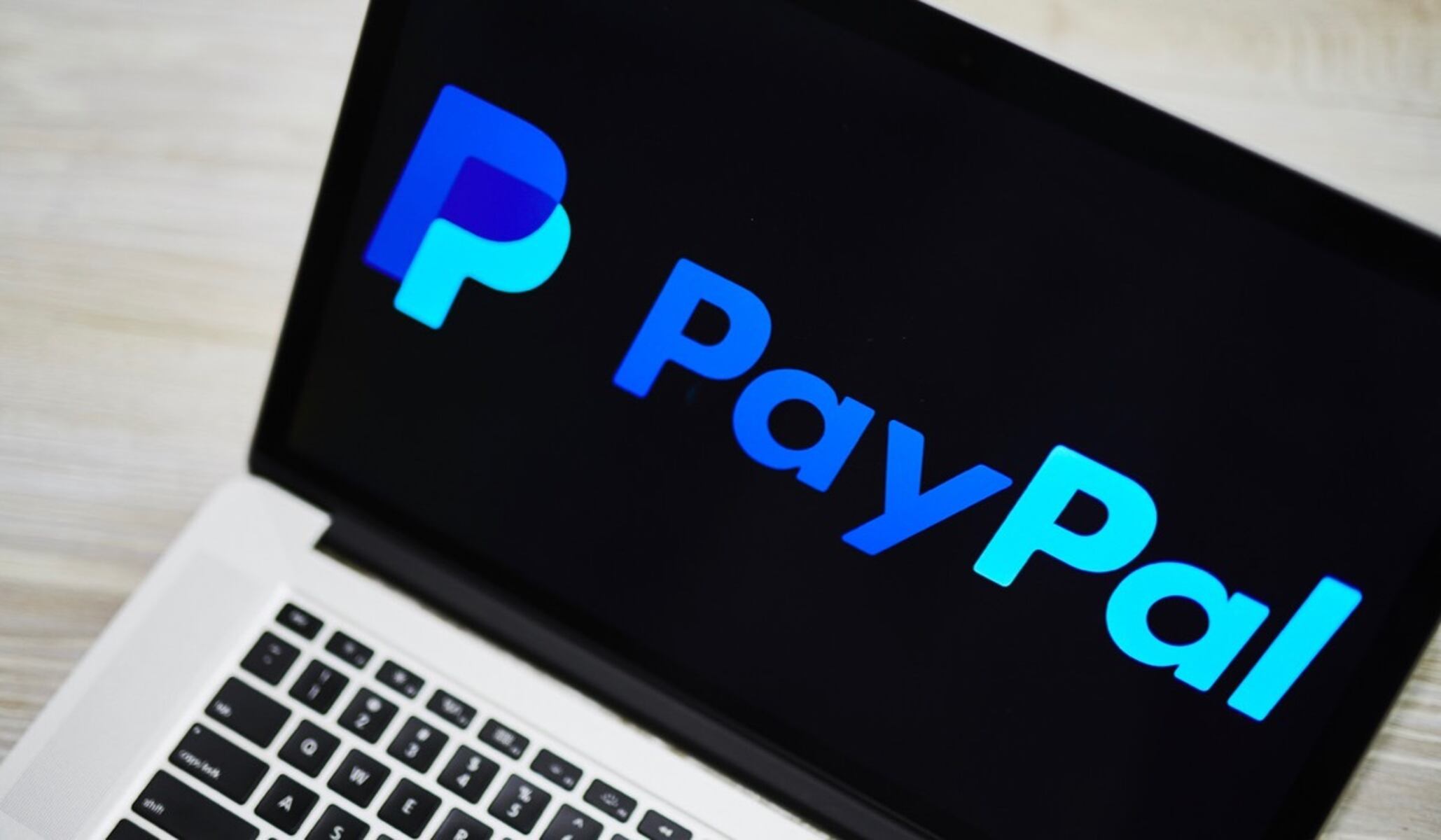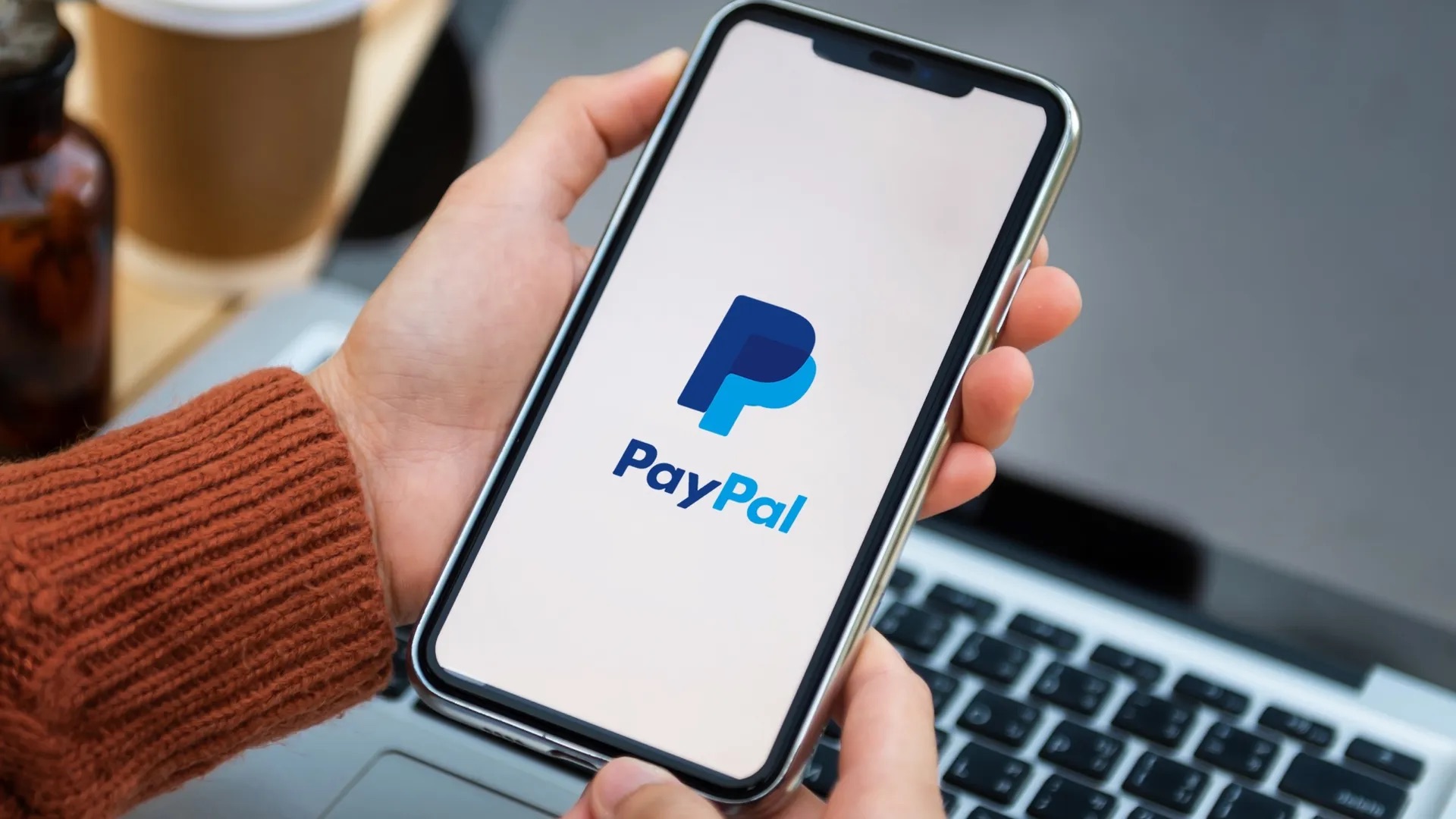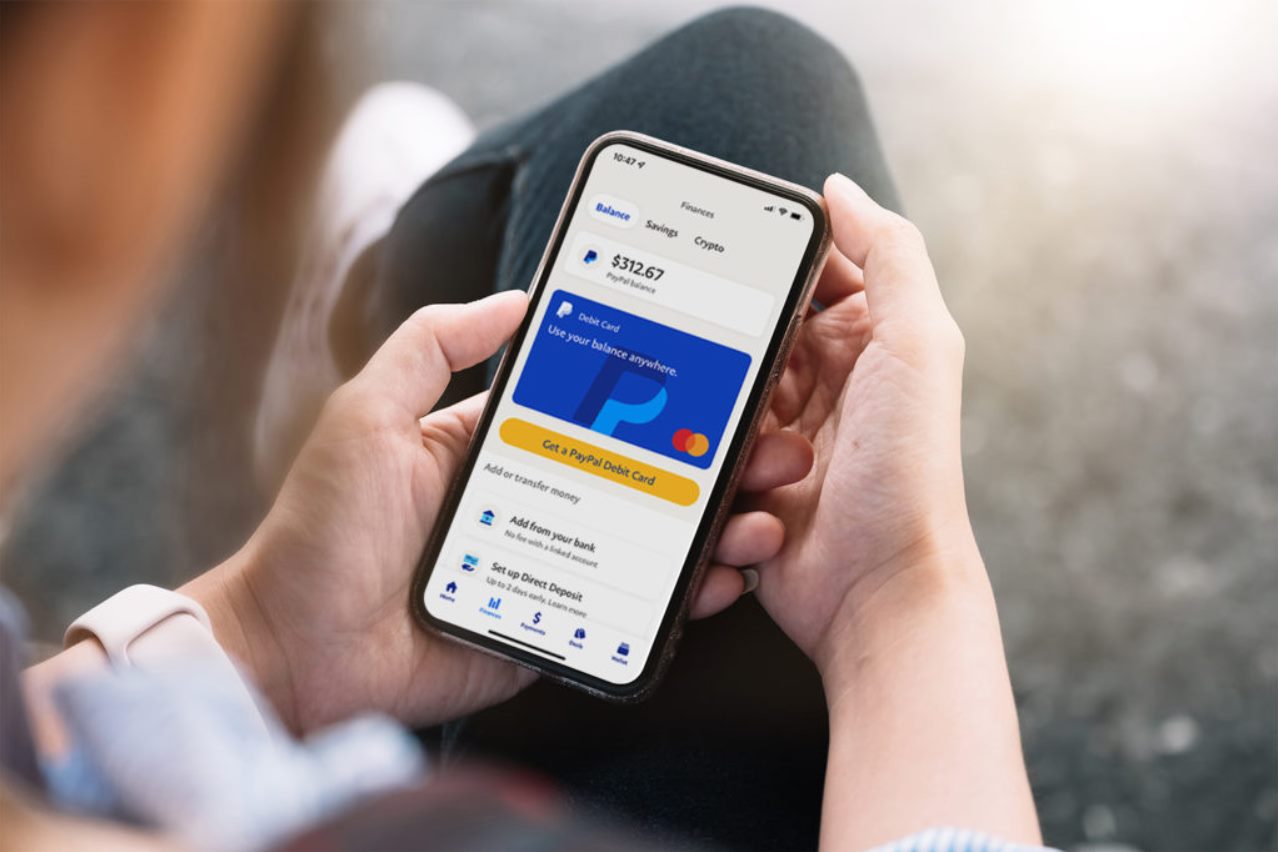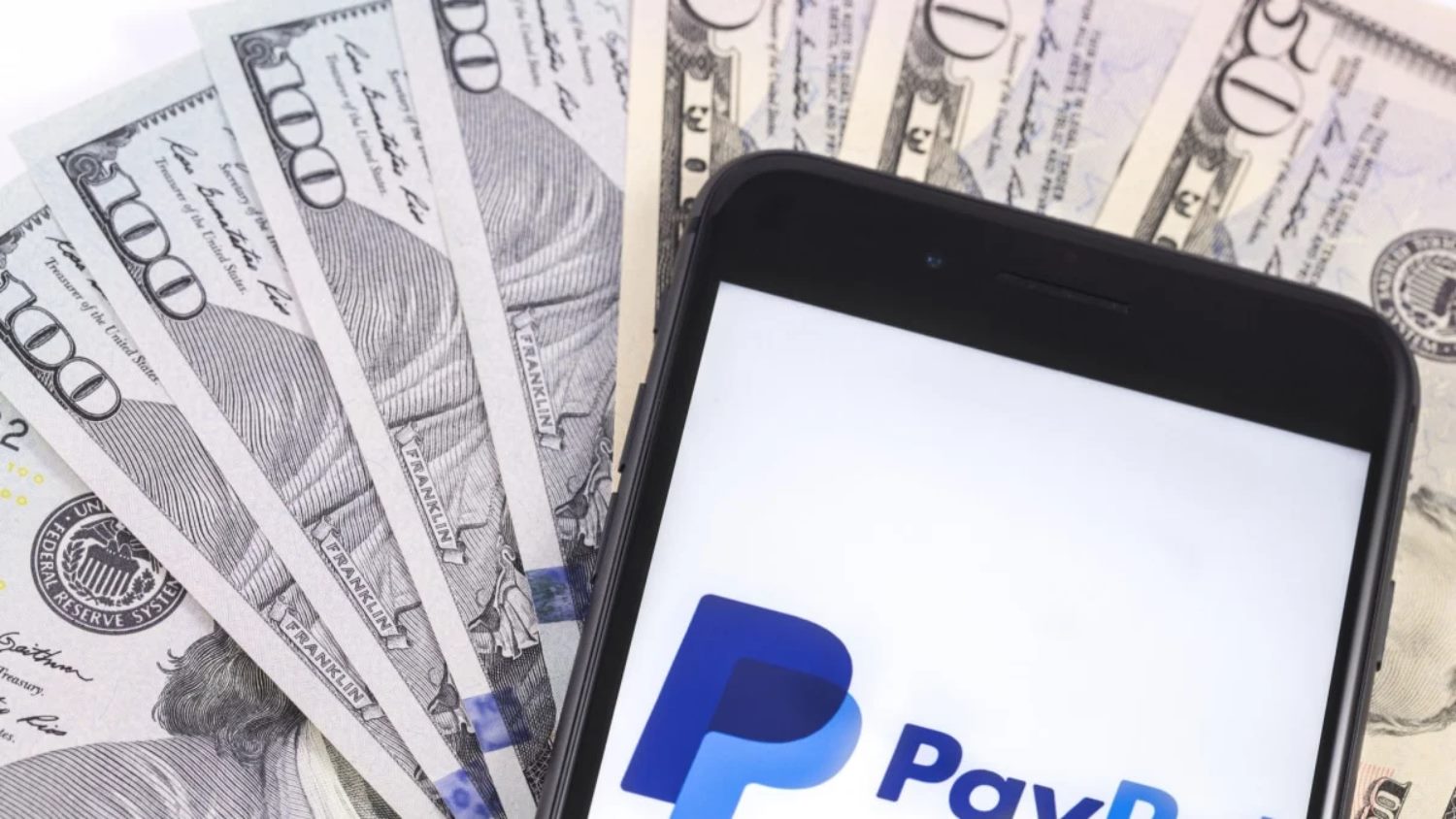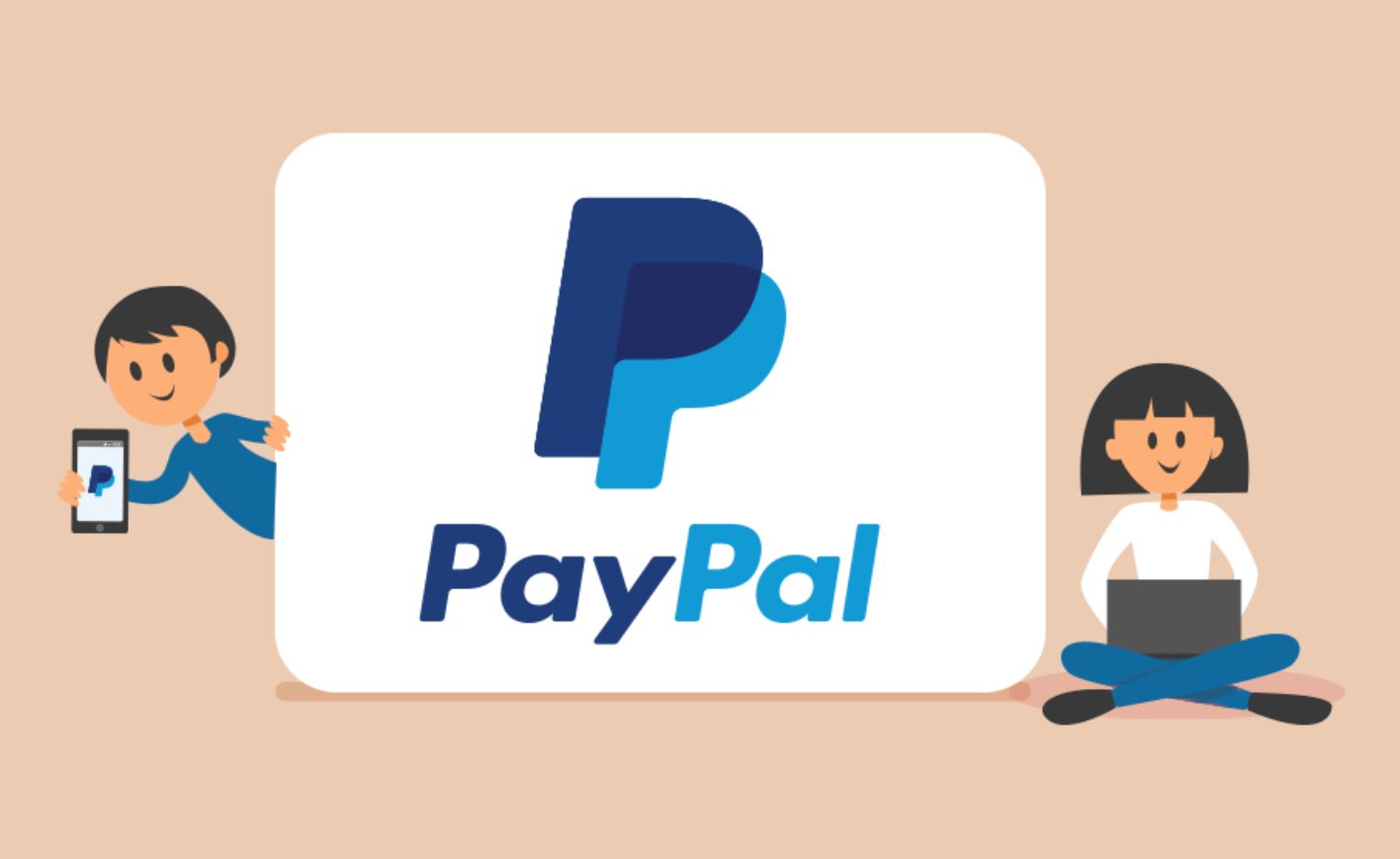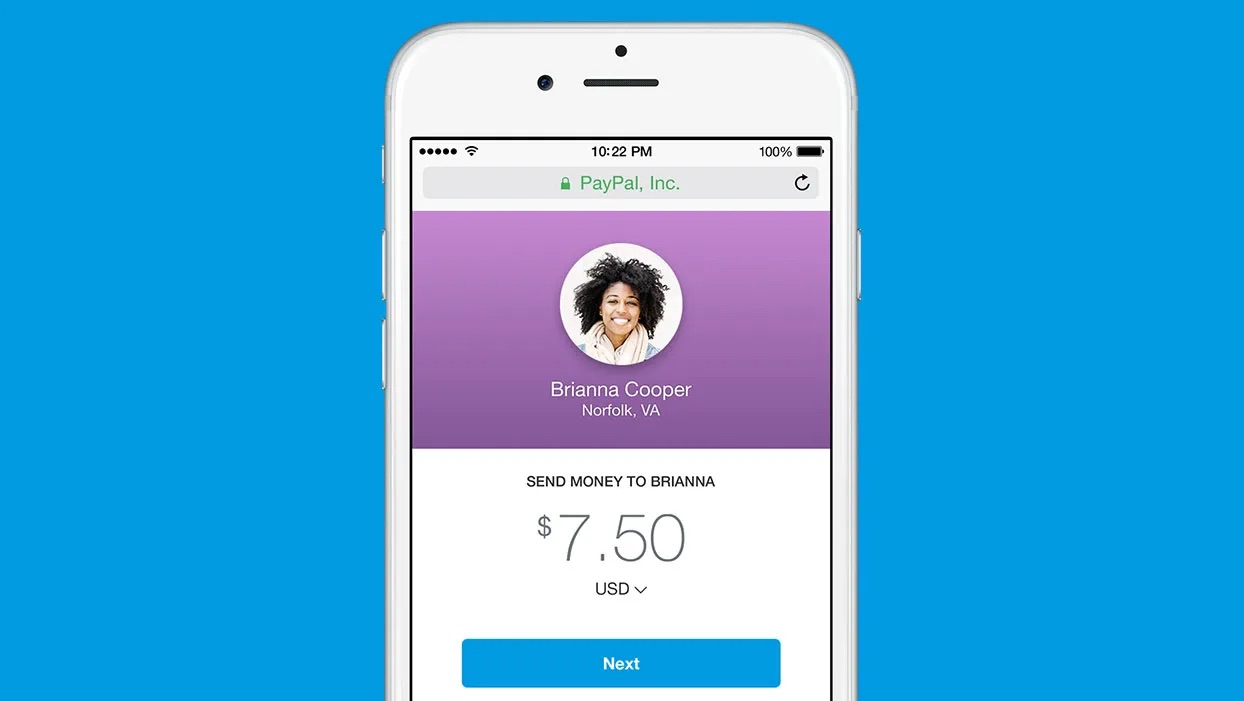Introduction
PayPal is a widely-used online payment platform that allows individuals and businesses to send and receive money securely and conveniently. Whether you’re making a purchase from an online store, sending money to a friend, or receiving payment for goods or services, PayPal offers a convenient way to handle your financial transactions.
While PayPal provides a convenient way to make and receive payments, it’s important to understand the fees associated with using the platform. PayPal charges various fees depending on the type of transaction, account type, and the location of the sender and recipient. Being aware of these fees can help you better manage your finances and ensure that you’re making informed decisions when using PayPal.
Throughout this article, we will explore the different types of fees that you may encounter when using PayPal. We will delve into the fees for personal and business accounts, both for domestic and international transactions. We will also touch upon currency conversion fees, seller fees, and the fees associated with online and in-person payments. Additionally, we will provide helpful tips for minimizing PayPal fees to help you save money in your financial transactions.
Whether you’re an individual shopper, an online seller, or a business owner, understanding PayPal’s fees is essential for effective budgeting and financial management. By the end of this article, you’ll have a comprehensive understanding of the various fees associated with using PayPal and be equipped to make informed choices that maximize your financial efficiency.
PayPal Fees for Personal Accounts
If you have a personal PayPal account, you can send and receive money from friends, family, or individuals for personal transactions. The good news is that most personal transactions within the same country are typically free of charge.
When you send money using your PayPal balance or a linked bank account, you won’t incur any fees. However, if you use a debit or credit card to fund the payment, PayPal may charge a fee, usually a small percentage of the transaction amount.
It’s important to note that if you’re sending money internationally, different fees may apply. PayPal charges a fee for each international transaction, which is typically a percentage of the transaction amount plus a fixed fee.
Receiving money into your personal PayPal account is usually free as well. However, if you receive payments for goods or services, PayPal may charge a fee based on the transaction amount. The fee structure may vary depending on your country and the currency being used.
Personal PayPal accounts offer a convenient way to send and receive money for personal purposes, such as splitting bills with friends or reimbursing someone for a shared expense. However, if you frequently engage in business-related transactions, it may be more suitable to upgrade to a business account to take advantage of additional features and benefits.
Now that you understand the basic fees associated with personal PayPal accounts, let’s explore the fees for business accounts and how they differ from personal accounts.
PayPal Fees for Business Accounts
If you’re running a business or engaging in commercial activities, you can open a PayPal business account to manage your transactions. Business accounts offer additional features and flexibility tailored to meet the needs of entrepreneurs and businesses.
Similar to personal accounts, PayPal charges fees for certain business transactions. However, the fee structure for business accounts differs slightly from personal accounts.
When you receive payments for goods and services through your business account, PayPal charges a transaction fee. The fee structure may vary depending on your country and the total transaction volume. Generally, the more transactions you process, the lower the transaction fees become.
In addition to transaction fees, PayPal may also charge fees for currency conversions. If you receive payments in a currency different from your primary currency, PayPal will convert the funds into your primary currency at a specified exchange rate. A conversion fee is applied to cover the costs associated with currency conversions.
In some cases, PayPal may also charge a fixed fee for specific business-oriented services and features. For example, if you choose to use PayPal’s invoicing system to generate and send invoices to your customers, there may be a fee associated with this service.
To fully understand the fees applicable to your business account, it’s essential to review PayPal’s fee structure for your specific country and type of business. This will help you accurately calculate costs and make informed decisions regarding your payment processes.
Now that we have covered the fees associated with personal and business accounts, let’s explore the fees for sending and receiving money within the same country.
Sending and Receiving Money within the Same Country
When it comes to sending and receiving money within the same country through PayPal, the fees can vary depending on the funding source and the type of account you have.
If you’re sending money from your PayPal balance or a linked bank account, there are typically no fees involved for domestic transactions. This means that you can transfer funds to friends, family, or individuals without incurring any charges.
However, if you choose to fund the transaction using a debit or credit card, PayPal may charge a small fee. The fee structure for card-funded transactions can vary, usually ranging from a small percentage of the transaction amount to a fixed fee.
On the receiving end, if you have a personal PayPal account, there are usually no fees associated with receiving money for personal transactions. However, if you receive payments for goods or services through a business account, PayPal may charge a transaction fee based on the transaction amount.
It’s important to note that the fees mentioned here are specifically for domestic transactions within the same country. Different fees may apply if you’re sending or receiving money internationally, which we’ll discuss in a later section of this article.
When using PayPal for domestic transactions, it’s a good practice to review the fee structure and understand the specific charges that may apply depending on your funding source and account type. This will help you plan and budget your transactions accordingly.
Now that we’ve covered domestic transactions, let’s move on to the fees associated with sending and receiving money internationally through PayPal.
Sending and Receiving Money Internationally
PayPal provides a convenient platform for sending and receiving money across borders, enabling individuals and businesses to engage in international transactions. However, it’s important to understand the fees involved when sending and receiving money internationally through PayPal.
When sending money internationally, PayPal charges a fee that varies depending on the country you’re sending the funds to and the payment method used. The fee typically consists of a percentage of the transaction amount along with a fixed fee. It’s essential to review PayPal’s fee schedule for international transactions to get a clear understanding of the charges applicable to your specific situation.
In addition to transaction fees, PayPal may also apply currency conversion fees when sending money internationally. If you’re sending funds in a currency different from your primary currency, PayPal will convert the amount at a specified exchange rate. A conversion fee is then applied to cover the costs associated with currency conversions.
On the receiving end, if you’re accepting payments from international buyers, PayPal charges a fee when converting the received funds into your primary currency. This conversion fee is similar to the one applied when sending money internationally and is designed to cover expenses related to currency exchange.
It’s worth noting that PayPal’s currency conversion rates may not always align with the market rates. Therefore, it’s advisable to compare the PayPal conversion rate with other service providers to ensure you’re receiving the most competitive rate.
When engaging in international transactions with PayPal, it’s essential to account for these fees in your budgeting and financial planning. Understanding the fees associated with sending and receiving money internationally will help you make informed decisions and effectively manage your cross-border transactions.
Next, let’s discuss the currency conversion fees that may be applicable when using PayPal for transactions involving different currencies.
Currency Conversion Fees
When using PayPal for transactions involving different currencies, you may need to consider currency conversion fees. These fees are applied when PayPal converts the amount from one currency to another during a transaction.
PayPal has its own exchange rates, which may differ from the market rates. The exchange rates are typically based on a combination of factors, including market conditions, currency volatility, and fees associated with currency conversion.
When you send or receive funds in a different currency, PayPal will automatically convert the amount at the time of the transaction. They apply a currency conversion fee on top of the converted amount to cover the costs associated with the exchange process.
The currency conversion fee can vary depending on the transaction amount and the currencies involved. It’s important to note that these fees can add up and potentially affect the overall cost of your transaction, especially for larger amounts or frequent international transactions.
To get an estimate of the currency conversion fees for your specific transaction, PayPal provides a currency converter tool on their website. This tool allows you to input the transaction amount and currencies involved to calculate an approximate conversion rate and fee.
It’s worth mentioning that if you have a PayPal balance in the currency of the transaction, you can avoid currency conversion fees by using that balance to make or receive the payment. By holding funds in various currencies within your PayPal account, you can strategically manage your transactions and minimize currency conversion costs.
It’s important to factor in currency conversion fees when planning your international transactions through PayPal. Always be aware of the prevailing exchange rates and alternative conversion options to ensure you’re getting the most favorable conversion rate.
Now that we’ve covered the currency conversion fees, let’s explore the fees associated with PayPal seller accounts and conducting online payments.
PayPal Seller Fees
If you operate an online business or sell products and services through PayPal, you may be subject to seller fees. These fees are incurred when you receive payments for goods or services through your PayPal account.
The seller fees charged by PayPal can vary depending on your country, the type of transaction, and the total sales volume. In general, PayPal charges a percentage of the transaction amount as a fee, along with a fixed fee per transaction. The fee structure may differ for domestic and international sales.
It’s important to note that the fee percentage decreases as your sales volume increases. PayPal offers tiered pricing for sellers, rewarding higher sales volumes with lower transaction fees. This can be beneficial for businesses that process a high volume of transactions through PayPal.
In addition to transaction fees, PayPal may also charge a fee for certain additional features and services used by sellers. For example, if you opt to use PayPal’s advanced payment solutions, such as PayPal Here for in-person payments, there may be additional fees associated with these services.
It’s crucial for sellers to carefully review PayPal’s fee structure for their specific country and business type to understand the fees applicable to their transactions. This will allow them to accurately calculate their costs and factor them into their pricing strategies.
Despite the seller fees, PayPal provides a reliable and widely-accepted payment platform that offers convenience and security to both buyers and sellers. The fees associated with operating a business are a small investment for the benefits and peace of mind that PayPal offers in terms of transaction management and buyer protection.
Now that we’ve covered the fees related to PayPal seller accounts, let’s dive into the fees associated with conducting online payments through PayPal.
PayPal Fees for Online Payments
When it comes to online payments, PayPal is widely recognized as a secure and convenient payment method. However, it’s important to be aware of the fees associated with using PayPal for online transactions.
For buyers, using PayPal to make online purchases is generally free of charge. You can link your debit or credit card to your PayPal account and make payments without incurring any additional fees.
On the other hand, sellers who receive online payments through PayPal may be subject to transaction fees. These fees are typically a percentage of the transaction amount and a fixed fee per transaction. The exact fee structure depends on the seller’s country and the total sales volume.
If you’re an avid online shopper or seller, it’s essential to factor in these fees when budgeting your online activities. Consider the fees as part of the cost of doing business or the price you pay for the convenience and security of utilizing PayPal as your payment method.
Additionally, PayPal may offer special pricing or promotional programs for certain types of online businesses or industries. It’s worth exploring these options if you meet the criteria, as they can potentially provide discounted rates or reduced fees.
As a buyer, it’s important to note that some merchants may pass on the PayPal fees to customers in the form of a surcharge or convenience fee. This is typically indicated during the checkout process, and it’s important to review the final cost before completing your transaction.
In summary, while buyers can generally enjoy free online payments through PayPal, sellers may be subject to transaction fees. Understanding these fees and considering them as part of your financial planning is crucial for both buyers and sellers when using PayPal for online payments.
Next, let’s explore the fees associated with in-person payments made through PayPal using devices like PayPal Here.
PayPal Fees for In-person Payments
In addition to facilitating online payments, PayPal also offers a solution for in-person transactions through their PayPal Here mobile card reader. This allows businesses to accept payments on-the-go or in physical retail settings. However, it’s important to be aware of the fees associated with in-person payments made through PayPal.
When using PayPal Here for in-person payments, PayPal charges a fee for each transaction. The fee structure can vary depending on your location and the type of card being used for the payment. Typically, the fee is a percentage of the transaction amount along with a fixed fee per transaction.
It’s important to note that there may be additional fees or charges for certain features or services offered by PayPal Here. For example, if you require additional card readers or choose to implement advanced features like tipping or invoicing, there may be extra fees associated with these services.
Despite the fees, PayPal Here offers a convenient and versatile solution for businesses that require a mobile or physical point-of-sale system. The ability to accept various payment methods, including credit and debit cards, can increase sales and provide customers with a seamless checkout experience.
Businesses considering PayPal Here should carefully review the fee structure to understand the costs associated with in-person transactions. It’s also beneficial to compare PayPal’s rates with other payment service providers to ensure you’re getting competitive pricing for your specific business needs.
By being aware of the fees and considering them in your pricing strategy, you can effectively manage the costs associated with in-person payments through PayPal.
Now that we’ve covered the main fees associated with PayPal, let’s explore any additional fees and charges that may apply in certain circumstances.
Additional PayPal Fees and Charges
While we have covered the main fees associated with PayPal, it’s important to be aware that there may be additional fees and charges that can apply in certain circumstances. These additional fees are worth considering to accurately assess the overall cost of using PayPal for your financial transactions.
One example of an additional fee is the charge for refunding a payment. If you need to issue a refund to a buyer, PayPal may retain the original transaction fee and charge an additional fee for processing the refund. The specific refund fees can vary depending on the country and currency involved.
Another potential fee is the charge for receiving payments in foreign currencies. If you frequently receive payments in currencies other than your primary currency, PayPal may charge an additional fee for managing these transactions and converting the funds to your primary currency.
There may also be fees associated with certain account actions or services. For instance, if you need to withdraw funds from your PayPal account to your bank account, there may be a withdrawal fee. Similarly, if you need to expedite a withdrawal or transfer, PayPal may charge an additional fee for this service.
It’s important to regularly review PayPal’s fee schedule and policies to stay informed about any new or updated fees that may apply to your account or transactions. This will help you accurately calculate the costs associated with using PayPal and make informed decisions for your financial management.
Lastly, PayPal reserves the right to make adjustments or introduce new fees in the future. Therefore, it’s crucial to stay updated with any notifications or communications from PayPal regarding changes to their fee structure or policies.
By being aware of the additional fees and charges that can apply in certain situations, you can effectively manage your PayPal account and ensure that you have a clear understanding of the costs involved in your transactions.
Now that we’ve covered the various fees and charges associated with PayPal, let’s move on to some tips on how to minimize these fees and optimize your PayPal usage.
Tips to Minimize PayPal Fees
While PayPal fees are a part of using the platform, there are several strategies you can employ to minimize these fees and optimize your PayPal usage. By following these tips, you can save money and maximize the value you get from your transactions:
- Choose the right account type: Evaluate your needs and consider whether a personal or business PayPal account is more suitable for your situation. Compare the fees and features of each account type to make an informed decision.
- Link your bank account: Whenever possible, fund your transactions directly from your PayPal balance or linked bank account. This will help you avoid fees associated with using credit or debit cards.
- Keep funds in your PayPal balance: If you frequently receive payments, consider leaving funds in your PayPal balance to cover future expenses. This can help you eliminate currency conversion fees and transaction fees for using linked funding sources.
- Monitor your account activity: Regularly review your account statements and transactions to identify any unauthorized or suspicious activities. By being proactive, you can avoid potential issues and prevent unnecessary fees.
- Take advantage of volume discounts: If your business processes a high volume of transactions, you may qualify for lower transaction fees through PayPal’s tiered pricing. Keep track of your sales volume to secure these discounts.
- Consider alternative payment options: Depending on your business needs and customer preferences, explore other payment methods that may offer lower fees or more favorable rates for your specific industry or target market.
- Contact PayPal support: If you have questions about specific fees or need assistance with managing your account, reach out to PayPal’s customer support. They can provide guidance and address any concerns you may have.
By implementing these tips, you can minimize PayPal fees and optimize your financial transactions, ensuring that you get the most value out of your PayPal account.
Now that we’ve explored the tips to minimize fees, let’s wrap up this article with a brief summary of what we’ve covered.
Conclusion
In conclusion, PayPal offers a convenient and widely-used platform for sending and receiving money online. However, it’s important to be aware of the fees associated with using PayPal to ensure that you make informed financial decisions.
Throughout this article, we’ve covered the various fees that can be incurred when using PayPal. We explored the fees for both personal and business accounts, as well as the fees for sending and receiving money within the same country and internationally.
We also discussed currency conversion fees, PayPal seller fees, and the fees associated with online and in-person payments. Additionally, we provided tips to help minimize PayPal fees, such as linking your bank account, monitoring your account activity, and considering alternative payment options.
By understanding the fee structure and implementing the tips provided, you can optimize your PayPal usage, save money, and effectively manage your financial transactions.
Remember, fees may vary based on your country, account type, and specific circumstances. Therefore, it’s important to review PayPal’s fee schedule and policies for your specific location and account type to ensure you have the most up-to-date information.
Whether you’re an individual user sending money to friends and family or a business owner accepting payments, being aware of PayPal’s fees will help you plan your finances accurately and ultimately make the most out of your PayPal experience.
So, go ahead and use PayPal with confidence, knowing that you have a clear understanding of the fees involved, and take advantage of the convenience and security it offers for your financial transactions.







